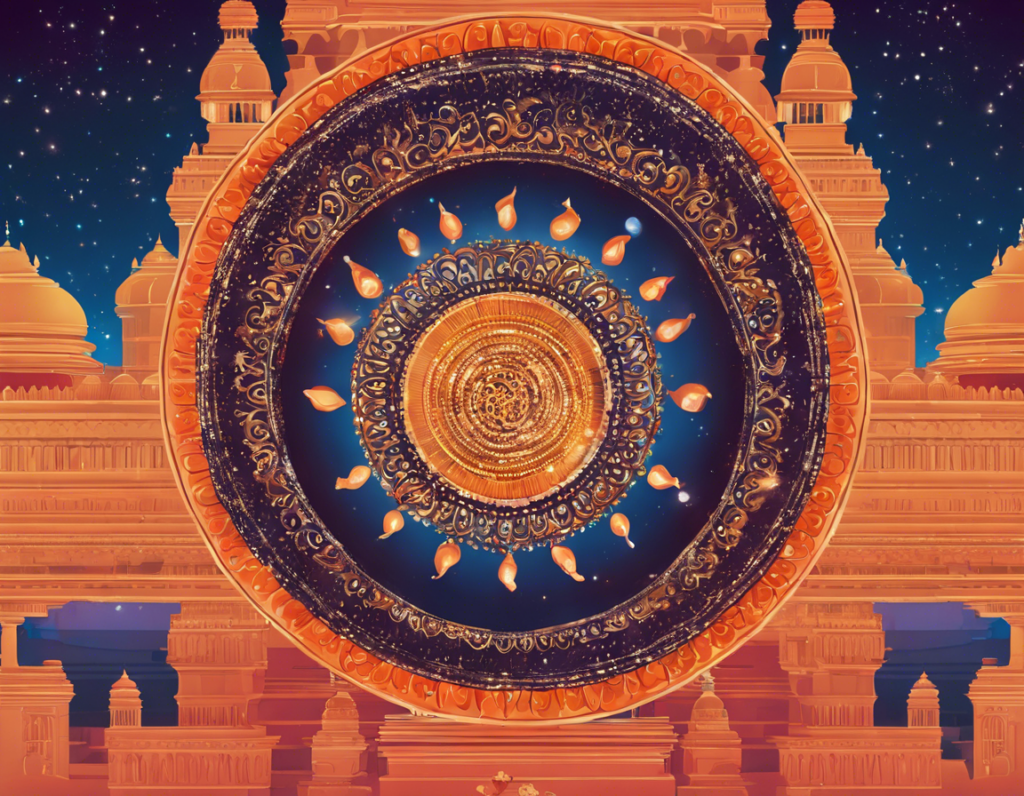Introduction
In the realm of celestial events, a Chandra Grahan, or Lunar Eclipse, is a truly fascinating phenomenon that has captivated cultures and civilizations for centuries. The word “Chandra” refers to the moon, while “Grahan” means eclipse in Hindi. This celestial event occurs when the Earth comes between the Sun and the Moon, casting its shadow on the lunar surface. As the Moon passes through the Earth’s shadow, it takes on a reddish hue, creating a breathtaking sight in the night sky.
Understanding Chandra Grahan
A Chandra Grahan takes place during the full moon phase when the Sun, Earth, and Moon are aligned in a straight line. There are three types of lunar eclipses: total, partial, and penumbral.
-
Total Lunar Eclipse: This occurs when the Earth completely blocks the Sun’s light from reaching the Moon. During a total lunar eclipse, the Moon can take on a vibrant red or copper color, often referred to as a “blood moon.”
-
Partial Lunar Eclipse: In a partial lunar eclipse, only a portion of the Moon enters the Earth’s shadow, resulting in a partial darkening of the lunar surface.
-
Penumbral Lunar Eclipse: This type of eclipse is more subtle, as the Moon passes through the outer part of the Earth’s shadow, known as the penumbra. It often results in a faint shading on the Moon’s surface.
Significance of Chandra Grahan
Across different cultures and traditions, lunar eclipses have been imbued with spiritual, mythological, and astrological significance. In Hindu mythology, a Chandra Grahan is believed to be caused by the demon Rahu devouring the Moon, only to have it released after a period of time. Rituals such as fasting, chanting of mantras, and taking a holy dip in sacred rivers are often observed during lunar eclipses to ward off any negative energies.
Chandra Grahan 2023 in India
In the year 2023, India is set to witness several Chandra Grahans, offering sky gazers and astronomy enthusiasts ample opportunities to witness this celestial spectacle. The dates for the lunar eclipses in 2023 are as follows:
-
Total Lunar Eclipse on May 16, 2023: This total lunar eclipse will be visible in India, providing a mesmerizing display as the Moon turns a deep shade of red.
-
Penumbral Lunar Eclipse on June 15, 2023: Though less dramatic than a total lunar eclipse, the penumbral lunar eclipse is still worth observing as the Moon passes through the Earth’s faint shadow.
How to Observe a Chandra Grahan
Observing a lunar eclipse is a relatively simple yet awe-inspiring experience. Here are some tips on how to make the most of witnessing a Chandra Grahan:
-
Find a Clear Viewing Spot: Choose a location away from city lights and buildings to optimize your viewing experience.
-
Use Binoculars or a Telescope: While a lunar eclipse is visible to the naked eye, using binoculars or a telescope can enhance the details of the Moon’s surface during the eclipse.
-
Check the Timing: Be aware of the timings of the lunar eclipse in your region to ensure you don’t miss the event.
-
Be Patient: Lunar eclipses can last for several hours, so be patient and enjoy the gradual changes in the Moon’s appearance.
Frequently Asked Questions (FAQs)
- Can we observe a Chandra Grahan with the naked eye?
-
Yes, lunar eclipses are safe to observe with the naked eye and do not require any special equipment.
-
Why does the Moon appear red during a total lunar eclipse?
-
The reddish hue of the Moon during a total lunar eclipse is due to sunlight bending through the Earth’s atmosphere and reflecting off the Moon, creating a phenomenon known as “scattering.”
-
Are there any superstitions associated with Chandra Grahans?
-
In some cultures, there are superstitions associated with lunar eclipses, such as avoiding outdoor activities or fasting during the eclipse.
-
How often do Chandra Grahans occur?
-
Lunar eclipses occur two to four times a year, though not all are visible from the same location.
-
Can a Chandra Grahan be predicted in advance?
- Yes, lunar eclipses can be accurately predicted using astronomical calculations, allowing astronomers to forecast when and where the eclipse will be visible.
Conclusion
A Chandra Grahan is a celestial event that offers a glimpse into the intricate dance of the Sun, Earth, and Moon in our solar system. From its mythological significance to its stunning visual display, a lunar eclipse is a reminder of the beauty and wonder of the cosmos. Whether viewed through the lens of cultural beliefs or scientific curiosity, witnessing a Chandra Grahan is an experience that connects us to the vastness of the universe above.
